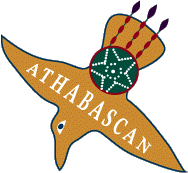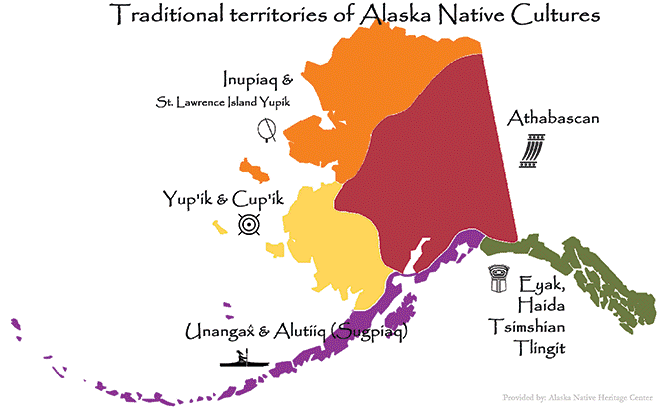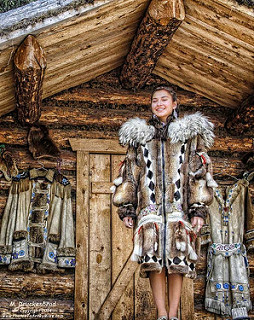Substance Abuse Among Native Alaskan Youth
Alaska
Raven Dominguez

Introduction
This research focuses on Alaskan Native Youth and substance abuse among them. Although substance abuse is prevalent among almost all Native American youth, this focuses on Alaskan Natives and especially the Athabascans of Alaska. Many people hypothesize over causes such as; self-esteem and self-identification problems among Native teens, access to drugs becoming more prevalent, trauma, and mental instability leading to an increase. Looking at a few of the possible causes of drug abuse and their effects may give insight to prevention and treatment plans. Alaskan Natives and researchers work with hope to find ways to better the livelihood of the adolescents in Athabasca. By understanding influences on this problem behavior, we can examine ways in which Native communities, government, and further research could build treatment and prevention systems that are relative and helpful to Native communities, and youth especially.

Environment and History
The main area in Alaska that this research focuses on is the territory inhabited by the Athabascan people. Eleven distinct linguistic groups and cultures make up the Athabascan people, they are; Koyukon, Han, Gwich’in, Holikachuk, Dena’ina, Deg Hit’an, Upper Kushkokwim, Tanana, Tanacross, Upper Tanana, and Ahtna. Athabascan territory is a large area of Alaska, with a majority of inland territory that connects to Canada on the East side. It begins south of the Brooks Mountain Range and continues down to the Kenai Peninsula (2). However, this does not include the territory that extends down into Canada. In this region, there are five major rivers that many tribe use for resources and live near to be close to ancestral land and history. Many years ago, the now Alaskan Natives crossed the Bering Land Bridge from Asia and have inhabited what is now Alaska and Canada for over 30,000 years. White colonists began to settle in this area around the 1900’s for the gold rush, and with this white colonialism began, taking Native land and native resources and taking over a significant amount of traditional culture by spreading technology and trade among other colonial ideals. Today, many Athabascans struggle with finding their roots and culture from before white colonization.
Substance Abuse and Adolescent Brain Development
The adolescent brain is a delicate and developing structure. Youth is an extremely vulnerable time for substance abuse because of the increase in negative effects on brain development. Rapid change begins in the brain development of adolescents, and any drug abuse can have a major impact on brain function. One of the major occurrences in adolescence is pruning and myelination of the neurons and neuron sheaths in the brain. Neurons form connections, and myelin sheathes speed up brain functioning. Brains exposed to drugs, such as narcotics, alcohol, marijuana, and tobacco “They look different on brain scans, and they function differently as well” (1).
o With the use of alcohol: Decrease in memory, attention, and processing speed. These language deficits consist “even after three weeks of monitored abstinence” (11).
o With the use of marijuana: Recently, research has shown “even after four weeks of monitored abstinence, adolescents who regularly smoke marijuana performed poorer on performance tests of learning, cognitive flexibility, visual scanning, error commission, and working memory”(11).
o With the use of nicotine: Similarly to alcohol and marijuana, nicotine was found to have negative impact on memory and cognitive functioning “Smoking during adolescence increases the risk of developing psychiatric disorders and cognitive impairment in later life. In addition, adolescent smokers suffer from attention deficits, which aggravate with the years of smoking” (4).
Substance abuse is dangerous, not only to the community, the culture, and reputation, but most importantly to the individual. These impacts are only a few of the many that alcohol, marijuana, and nicotine cause on the adolescent brain. This does not include narcotics and prescription drugs. Many narcotics, such as the increasingly popular, opioids, are extremely addictive, and even more so for the adolescent brain. This creates a tough cycle that is frequently hard to stop, and can create life-time users.
Culture and Future Generations
Historical and Intergenerational Trauma
Historical trauma refers to trauma experienced throughout many generations, and throughout a specific group of people’s history. Native American history is filled with racism, genocide, and cultural appropriation among many other traumas. Dr. Norma Grey wrote on substance abuse among Native Americans and its connection with culture, her understanding is that historical trauma contributed to this growing problem; “Historical trauma of much earlier generations may accumulate and affect the cultural and emotional strength of each Nation, leaving its people more vulnerable to using alcohol or other drugs as a means of coping. Thus, it is important to address lifetime trauma in the prevention and treatment of alcohol abuse as well as the cultural and spiritual aspects of trans-generational trauma” (5). Trauma often causes cases of Post-Traumatic Stress Disorder, which is a common influence to the increase of drug abuse. Generations have each been victim to old and new traumas, genocide, racism, government-induced poverty, all can act as a driving force to PTSD and as a result, substance abuse. Historical trauma is important because it continues to impact and influence present and future generations actions. As more research is done, trauma is becoming a more noticeable influence on issues in Indian Country today. Mary Annette Pember, who wrote Intergenerational Trauma: Understanding Natives Inherited Pain, addressed this new ever-growing presence of historical trauma; “trauma is taking center stage in public discussions about its impact on mental and physical health. Medical and social sciences research is revealing more each day about the insidious implications of trauma for children, adult victims of violence, soldiers and even future generations who may carry its effects in their DNA”(9).
Westernization of Athabascan Culture and Lifestyle
As colonialism spread throughout Alaska, the Native communities lost values, culture, and knowledge of their history. Westernization became a dominant force, government regulations of land and animals increased and sources of Athabascans income dwindled. Welfare programs were established by the government and became common. Some Natives argue that these changes contributed to the decline of not only traditional practice, but the increase of substance abuse as well. Subsistence and the Cultural Survival of the Athabascan People states; “Our existence began to be at the mercy of the federal and soon-to-be state government. Food and clothing were bought instead of being made from materials found in our environment. Dependence upon the welfare system became a way of life for some. Receiving money for doing nothing is a major contributing factor to the gradual increase of substance abuse among Ahtnas”(8).
Other governmental influences include the political and social change of pharmaceutical use in everyday life. With an increase in the use and prescription of drugs, there has no doubt been an increase on reliance of such drugs. An Athabascan Alaskan Native commented on a blog called Substance Use in American Indian Youth is Worse than We Thought. This individual shared personal stories of the prevalence of drug abuse in Native Athabascans. She also spoke of how this occurs. She mentioned her own sister’s struggle and states that her sister
“…mentioned that everyone in Arctic and Venetie village are all addicted to prescription drugs badly including one of her children. They are ordering pills online and having them shipped C.O.D. to the village. So, these highly addictive pills are being easily accessible via the internet now and are becoming a serious epidemic in the rural villages of Alaska” (12).
The easy access to prescription drugs has been detrimental to Athabascan communities, and is yet another way substance abuse has been able to grow among youth.

Current Youth
Loss of touch with traditional culture in combination of rising dominant culture, and has led to Native youth especially to lose sight of their history, and severely feel the cultural conflict of their ancestor’s history and the new culture that exists in Alaska. Nancy Gale connects both historic trauma, and this change tribal culture to assess the problems they cause with the new generation; “Native youth can easily be caught in a no-man's land of confusion and fuzzy self-image. Besides coping with the normal challenges of adolescence, Native youth must also deal with their identity as Indians” (3). Disconnect with traditional tribal history and culture impacts the community, just as new Western ways bring access and familiarity with drugs into everyday life. Although this disconnect between teen and traditional culture is believed to be a cause of drug abuse, community members also believe that revitalization of tribal heritage will re-connect children and adolescents to a healthy sense of self and community.
The Connection Between Substance Abuse and Suicide
Another major community issue that is plaguing Alaskan Native’s is suicide. Though there are many factors that are possible influences, research shows a correlation with substance abuse and suicide. Research done by Maurizio Pompili on adolescents regarding the relationship between substance abuse and suicide has found a strong positive correlation “Adolescents with substance abuse disorder who attempt or complete suicide can be characterized as having mood disorders, stressful life events, interpersonal problems, poor social support, lonely lives and feelings of hopelessness. The research supports the existence of a strong relationship between suicide and substance abuse” (10). The implications are still not completely clear, and belief as to which came first is divided. Pompili collected data from many studies on adolescents, however, Nora Grey, author of American Indian and Alaskan Native Substance Abuse: Co-Morbity and Cultural Issues examines this correlation in the context of Native Americans and Alaskans. Grey mentions not only how substance abuse and suicide are connected among Native Americans and Alaskans, but brings historical and inter-generational trauma back into the picture of what forces may be playing a role in both of these problem behaviors;
“The devastating impact of substance abuse on American Indians and Alaska Natives (AI/ANs) is reviewed with an emphasis on psychological and physical effects. Comorbidity of substance abuse, trans-generational trauma, Post -Traumatic Stress Disorder, and depression among AI/ ANs … may cause, impact, and/or exacerbate the others”(5).
Prevention and Treatment
When considering treatment plans and prevention strategies, it is important to consider culturally appropriate systems. Prevention and treatment may be different for Athabascan youth who suffer from historical trauma as well as missing pieces of tribal culture from their lives. One difference that communities and governments might take into consideration is the use of holistic systems instead of Western medical systems. An example of this is the Medicine Wheel, this focuses on the traditional balance of spiritual, mental, physical, and social aspects of an individual. The Medicine Wheel has been a helpful tool for substance abuse treatment among Native Americans and Alaskans because it allows individuals to mark progress, and understand their healing and recovery process as a whole, dynamic system (5). When treatment is completed, individuals can utilize the Medicine Wheel further, to reflect and remember the progress that they made, and keep in-touch with the complex journey and decisions they have made.
“The Wheel reminds the provider and the individual client to incorporate the whole person in their journey of wellness. If treatment is to be successful, recovery from the ravages of substance abuse in AI/ANs must address the whole person, their historical intergenerational trauma, the spectrum of additional traumas, all varieties of psychological pain, spiritual expression, the quality of relationships, the knowledge and practice of tradition and culture, physical health and strength, and education/employment”(5).
A problem arises when it comes to understanding the effect of treatment plans among Native adolescents. There is not much research done on the effectiveness of current treatment plans, such as SAMHA (Substance Abuse and Mental Health Services Administration), however, an article called Preventing Substance Abuse in American Indian and Alaska Native Youth: Promising Strategies for Healthier Communities complies two approached that have been researched, they are the community-based prevention and individual-based prevention methods that have been practiced and researched across Native communities and individuals.
Community
When it comes to the community-based prevention, generally major community leaders and interactive groups are promoted. This involved the entire community, not only providing support for adolescents, but also promoting good health across the whole community. This could be especially important for Native communities because, “Some authors have described the inclusion of an entire community in the intervention as consistent with Native values and traditions, which stress collective decision making in resolving community or tribal concerns” (6). Community prevention can provide leaders and role models for children, and empower Native youth.
Individual
The individual model looks at how socialization on the individual occurs. The use of drugs, especially alcohol in adolescents has roots in the fact that they are socialized by peers, family, and the community to understand it as a normal part of life. Individualized treatment programs provide peer-intervention and skills-training to reduce substance abuse among youth, and focus on individual treatment plans.
Teens and the Community
When it comes to treatment and prevention it seems, regardless of the model used that Native communities want to take a role in helping prevent teen drug abuse. Nancy Gale’s article on substance abuse in Native adolescents emphasizes the role of a support group for youth; “A tribal community's most valuable resource is its own people. Allies in this cause include parents and families, school personnel, social service providers, and physical and mental health care providers. In addition, court, law enforcement and tribal government personnel can provide valuable assistance” (3). When it comes to prevention and treatment, looking at holistic and communities programs may be the key to decreasing the prevalence of substance abuse among youth. Not only this, but by reducing the normalization of substance abuse, new generations will be less likely to have increased levels.
References
1) A Precious Natural Resource:The Developing Adolescent Brain. (n.d.). Retrieved April 19, 2018, from Visit
2) Alaska Native Heritage Center | Alaska History and Cultural Studies. (n.d.). Retrieved April 19, 2018, from Visit
3) Gale, N. (n.d.). Fighting Alcohol and Substance Abuse among American Indian and Alaskan Native Youth. ERIC Digest. Retrieved April 19, 2018, from Visit
4) Goriounova, N. A., & Mansvelder, H. D. (2012). Short- and Long-Term Consequences of Nicotine Exposure during Adolescence for Prefrontal Cortex Neuronal Network Function. Cold Spring Harbor Perspectives in Medicine, 2(12), a012120. Visit
5) Gray, N., & Nye, P. S. (2001). American Indian and Alaska Native Substance Abuse: Co-Morbidity and Cultural Issues. American Indian and Alaska Native Mental Health Research (Online); Aurora, 10(2), 67–84. Retrieved from Visit
6) Hawkins, E. H., Cummins, L. H., & Marlatt, G. A. (2004). Preventing Substance Abuse in American Indian and Alaska Native Youth: Promising Strategies for Healthier Communities. Psychological Bulletin, 130(2), 304–323. Visit
7) History of the Minto Athabascan. (n.d.). Retrieved April 19, 2018, from
8) Kenneth, & Johns. (n.d.). Subsistence and the Cultural Survival of the Athabascan People. Retrieved April 19, 2018, from Visit
9) Pember, M. A., & Duran, B. (n.d.). Intergenerational Trauma: Understanding Natives' Inherited Pain. Retrieved from Visit
10) Pompili, M., Serafini, G., Innamorati, M., Biondi, M., Siracusano, A., Giannantonio, M. D., … Möller-Leimkühler, A. M. (2012). Substance abuse and suicide risk among adolescents. European Archives of Psychiatry and Clinical Neuroscience, 262(6), 469–485. Visit
11) Squeglia, L. M., Jacobus, J., & Tapert, S. F. (2009). The Influence of Substance Use on Adolescent Brain Development. Clinical EEG and Neuroscience, 40(1), 31–38. Visit
12) Volkow, N., & April. (2014, September 11). Substance Use in American Indian Youth is Worse than We Thought. [Web log comment]. Retrieved April 19, 2018, from Visit
Photo References
o Athabascan. (n.d.). [Photo] Retrieved April 20, 2018, from Visit
o Druckenbrod, M. (2014). An Athabascan Indian woman models fur winter dress at the Chena Indian Village in Fairbanks, Alaska [Photo]. Retrieved from Visit
o Traditional Territories of Alaska Native Cultures. (n.d.). [Photo] Retrieved April 20, 2018, from Visit